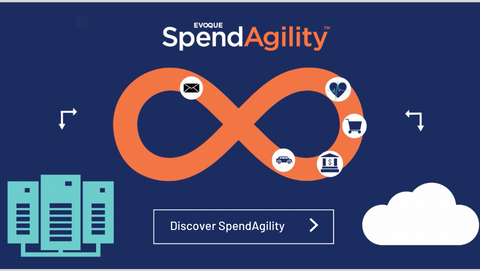September 15
Even as more organizations migrate to cloud,colocation, or a hybrid IT infrastructure environment there are many types of organizations who still benefit from, if not require, a dedicated data center customized to their needs This is particularly true of larger enterprises with highly specialized infrastructure, hyperscalers and government organizations facing strict compliance and security requirements. In fact, data center construction is expected to surge over the next few years as companies race to meet the growing demand for digital services in the operation of their own business as well in the design of their product offerings. Breaking ground on the ideal data center site requires thorough research to maximize your investment
6 Major Considerations When Selecting a Data Center Site
When assessing potential locations for a new data center, there are a number of considerations to prioritize:
1. Natural Disaster Risks
Data center downtime can significantly disrupt applications and data availability, which can hurt your organization’s bottom line as well as its reputation. According to a 2020 study, 48 percent of outages cost organizations between $100,000 and $1M, a sharp increase from 28 percent the previous year. Natural disasters have long been one of the biggest potential downtime risks facing data centers. As climate events continue to increase in severity, avoiding site prone to these risks is becoming an even bigger priority.
Earthquakes, floods, tornados and hurricanes are the most severe natural disasters occurring in the U.S. There are few regions that don’t face at least one of these threats and many parts of the country can be impacted by several. Facilities can be made to be more earthquake-resistant and certain other hardening techniques can be used in the construction of the data center to make it less prone to damage from natural disasters but it’s important to remember that a disaster will also impact the surrounding area. Additional measures may need to be in place to facilitate access to the data center site after a disaster strikes. When data centers in hurricane-prone areas got hit recently, even though the sites remained operational, they were practically inaccessible because of flooding and damaged regional infrastructure.
2. Power Costs & Reliability
Data center construction costs for are measured in large part by the cost of power needed to support the equipment and cooling of the data center. The cost of electricity varies in different regions of the country. Since data centers have substantial energy requirements, running a facility in a state with high power costs can quickly become very expensive. Building a data center close to major power sources, such as hydroelectric dams, power plants, or wind farms, can minimize initial construction costs and reduce the risk of problems with energy transmission in the future. Building a data center in close proximity to renewable energy sources may be imperative for organizations trying to reduce their carbon footprint.
While cost is a key concern when it comes to data center power, reliability is equally important. When extreme winter temperatures disrupted Texas electrical grids in early 2021, several businesses experienced application and network downtime as data centers went down. Although most of the state’s data centers managed to stay online, they faced tremendous difficulties securing fuel for their generators. Similarly, rolling blackouts that occurred in California in 2020 area risk of building a data center in a region with an increasingly unreliable power infrastructure.
3. Connectivity Options
Data centers also require access to fast, reliable internet services to maximize their potential as connectivity and networking hubs. If a facility only has access to a single ISP, it’s going to be more vulnerable to outages and DDoS attacks. Single provider markets also make it difficult for data centers to secure favorable pricing and force them to settle for whatever services the provider decides to offer.
Although efforts have been made to expand connectivity throughout the country, many areas of the US are still dominated by a single carrier. Some areas don’t have one at all. Selecting a data center site in a region with robust connectivity access provides much greater flexibility and resiliency, which is vital for the facility’s long-term viability and performance.
4. Proximity to Users
There’s a reason many data center builders choose to build their facilities in markets with high real estate and power costs. Those markets are typically in high-density areas, which means that they’re much closer to their end users. Building a data center far from those users frequently results in much higher latency, which negatively impacts application performance and delivers a subpar customer experience.
However, there are some situations in which proximity to end users means putting a data center in a location that might appear less than ideal in terms of power or connectivity availability. Many areas of the country are only served by one broadband carrier, but if a large number of users live in that region, organizations may consider building a smaller edge data center in that location to extend low latency service to that market.
5. Labor Availability
A data center requires a workforce with extensive technical expertise. These candidates are easier to find in markets with a thriving technology sector than in more remote, underdeveloped areas. It can be difficult and expensive to convince people to move to such locations. If the surrounding area doesn’t provide much in the way of career opportunities, it will also be more difficult to retain that talent.
On the other hand, the COVID 19 pandemic fed dramatic growth in remote data center operation. The pandemic also demonstrated that it is possible to perform many work tasks remotely. By automating portions of data center management and expanding the use of remote employees or contractors, many labor challenges inherent in building a facility in an emerging market can be offset. When evaluating labor needs, it’s critical to identify which roles need to be performed in person and which ones can be automated or carried out remotely.
6. Economic Incentives
Economic incentives can offset some of the substantial costs of data center construction and on-going operation. Whether these incentives serve to provide financing, tax credits, or greater access to labor, they are conceived with one overriding goal in mind: providing a return-on-investment for the taxpayer. These incentive programs are ever-changing and organizations may be wise to enlist the help of a site selection specialist to get help navigate the complex world of data center funding and get a location-specific view of the economic incentive landscape.
Some common elements of state-level incentive programs include:
- Exemption from sales and use taxes on electricity consumption
- Exemption from sales and use taxes on data center equipment
- Exemption from financial transaction taxes or fees on trades of stocks, bonds, derivatives and financial products
- Tax credits for construction workers for projects located in underserved areas
- Tax credits for hiring data center employees in economic development zones
In order to qualify for most incentives, builders must meet spending and job creation thresholds that vary by location.
Let Evoque Help Select Your Next Data Center Site
At Evoque Data Center Solutions, we recognize that some business operations require a customized data center built to your exact specifications. That’s why our Build-to-Suit data center solution works with enterprises, hyperscale providers and governments to plan, finance and build the facility you need. Whether you’re looking for a turnkey data center campus built on one of our global land bank sites or a custom built annex adjacent to one of our connectivity-rich colocation facilities, our experienced team can position your build-to-suit project for success.
To learn more about how our seasoned, mission critical real-estate team can deliver exactly what you need faster than you imagined, contact us today.





